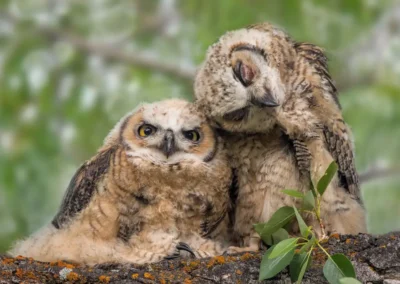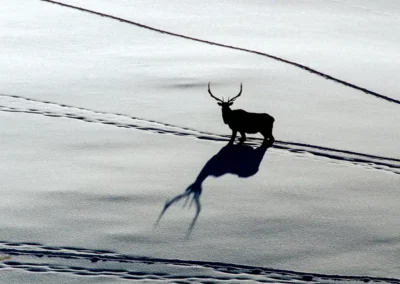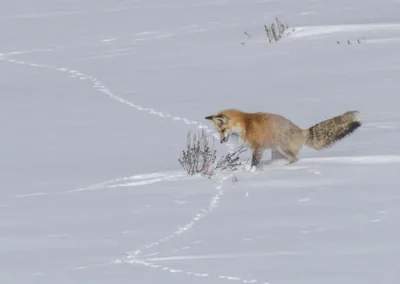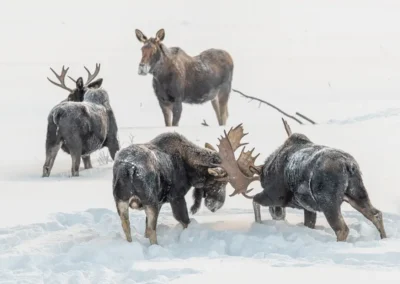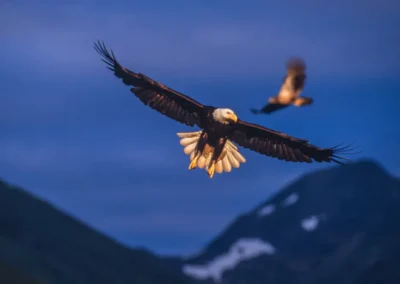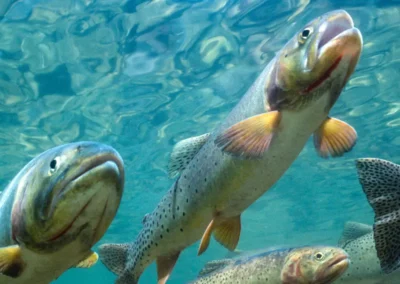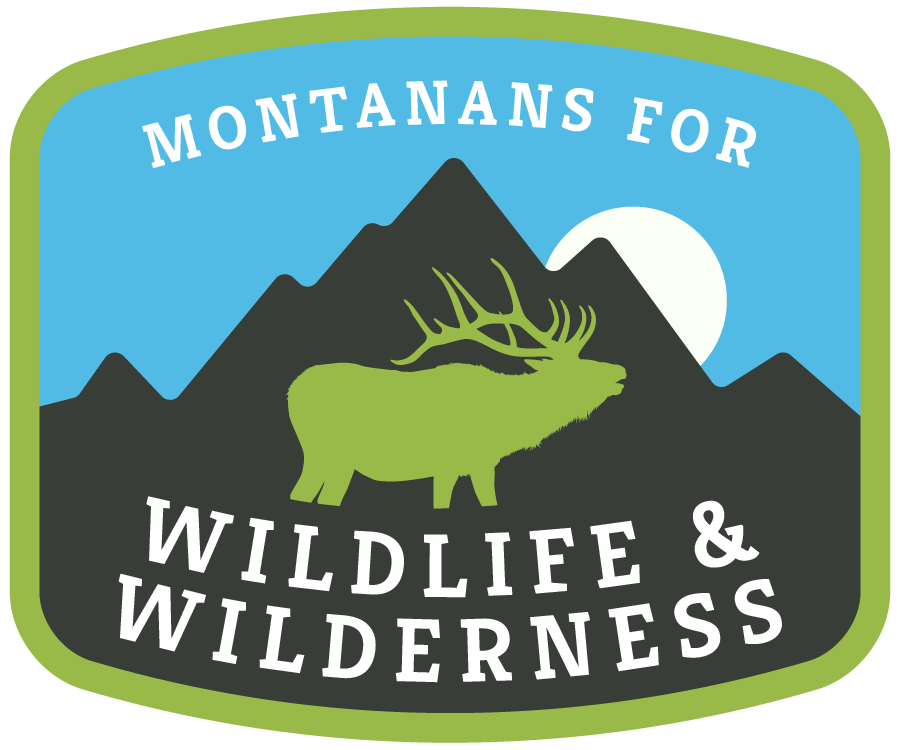
PROTECT WILDLIFE BY PRESERVING WILDERNESS
Secure the Gallatin Range … as an extension of Yellowstone National Park… as wilderness to achieve an intact landscape for wildlife
WHAT WE DO
We advocate maintaining current legal status of the Hyalite Porcupine Buffalo Horn Wilderness Study Area
About US
We are individual Montana citizens, conservationists, business owners, scientists, and journalists, who are intimately familiar with the Gallatin Range.
RESOURCES
Scientific Assessments, Commentaries and Letters, Popular Press
Statement
OUR MISSION
We advocate for protecting wildlife by preserving wilderness that is intact and connected in the Gallatin Range and the Greater Yellowstone Ecosystem, especially the entire Hyalite Porcupine Buffalo Horn Wilderness Study Area
We do so by:
- Taking policy positions
- Providing scientific analysis and historical context
- Communicating objective information to the public and policy makers
- Seeking common ground through discussion forums
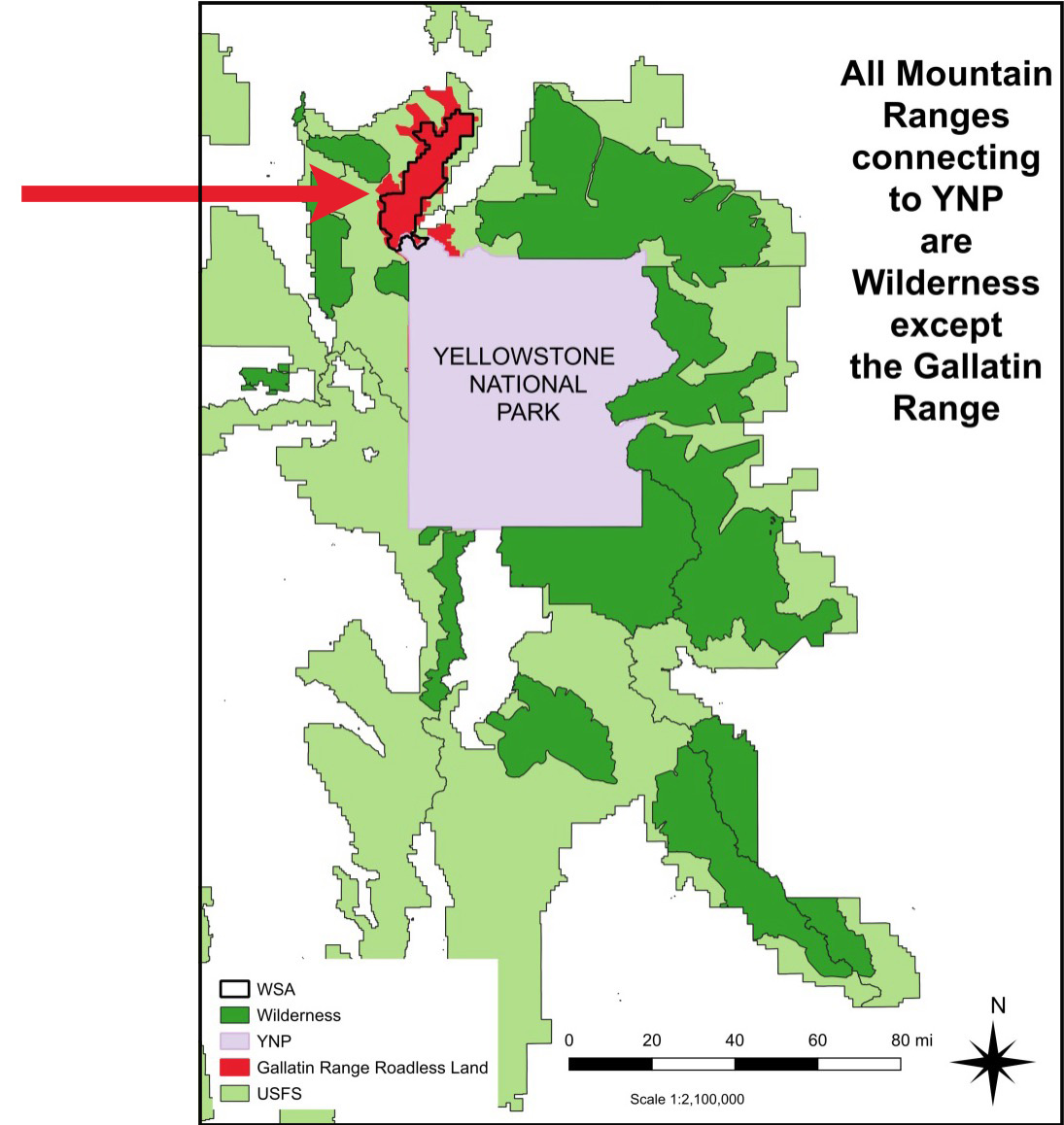
What we do
POLICIES WE ADVOCATE FOR
Maintain current legal status of the Hyalite Porcupine Buffalo Horn Wilderness Study Area
Why:
- Maintain all 155,000 acres as wilderness.
- Protect highly sensitive wildlife habitat including areas in West Pine and Porcupine-Buffalo Horn.
- Reduce habitat fragmentation and maintains core security habitat for wildlife.
- Better maintain vital connectivity to the Glacier Ecosystem to the north.
- Maintain current watershed protection.
- Aim to reduce climate change impact on the Gallatin Range, which acts as a climate refuge.
Scientific analysis of wildlife in the Gallatin Range:


Maintain current legal status of the Hyalite Porcupine Buffalo Horn Wilderness Study Area
Why:
- Maintain all 155,000 acres as wilderness.
- Protect highly sensitive wildlife habitat including areas in West Pine and Porcupine-Buffalo Horn.
- Reduce habitat fragmentation and maintains core security habitat for wildlife.
- Better maintain vital connectivity to the Glacier Ecosystem to the north.
- Maintain current watershed protection.
- Aim to reduce climate change impact on the Gallatin Range, which acts as a climate refuge.
Scientific analysis of wildlife in the Gallatin Range:
Any new Congressional act—short of giving this WSA protection under the 1964 Wilderness Act—will likely erode current protections.
POLICIES WE CAUTION AGAINST
The Greater Yellowstone Conservation and Recreation Act
Why:
- The Act removes 41% (63,000 acres) of the WSA from wilderness protections.
- The Act codifies possibly illegal mechanized and motorized recreation.
- Vegetation management and fuels treatment are permitted. In some areas commercial logging is allowed.
- The GYCRA constrains wildlife connectivity, exacerbates the continuing and accelerating effects of climate change, and places additional stress on wildlife.
- In 100 square miles now protected as Wilderness, the GYCRA would permit so many new human activities involving power, noise, emissions, and disturbance of wildlife that it cannot be seen as a compromise or “balanced” proposal.
Scientific analyses of the GYCRA:
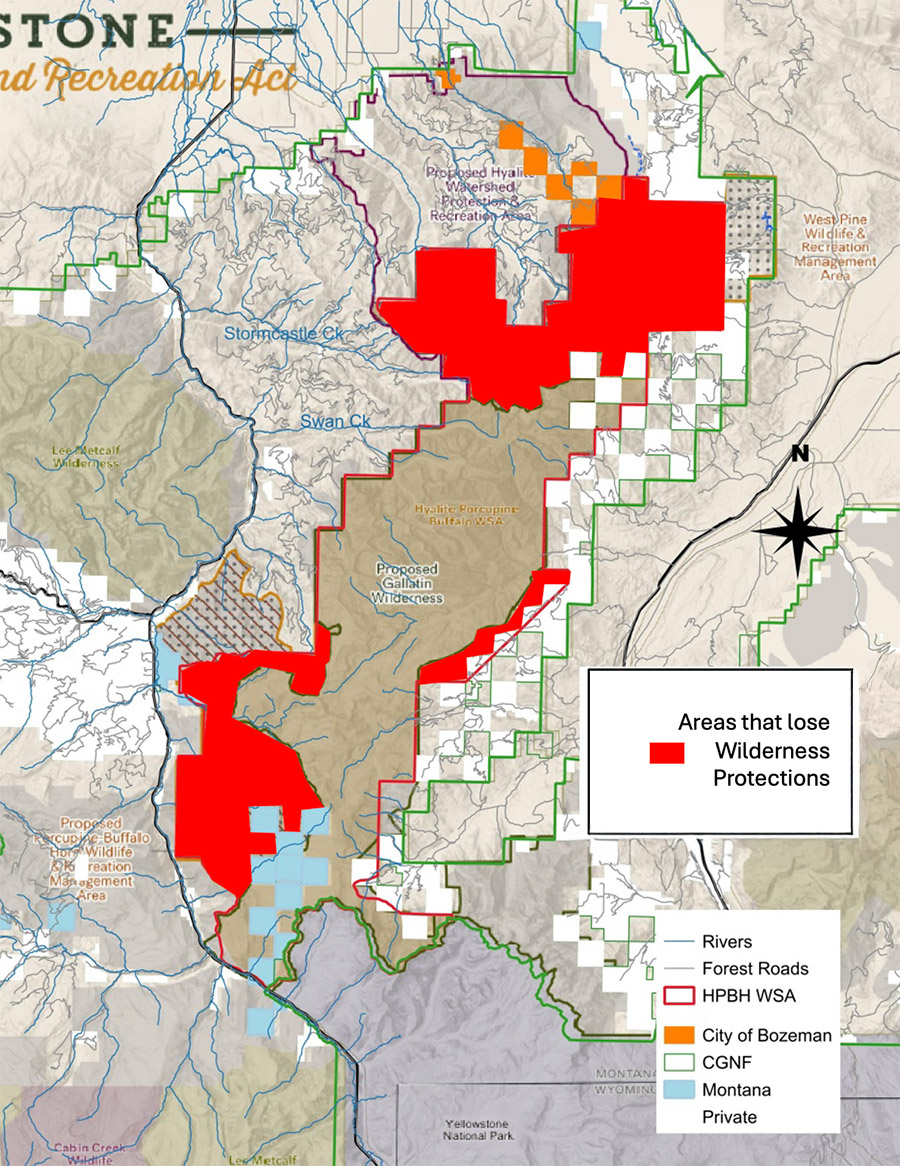
The Greater Yellowstone Conservation and Recreation Act
Why:
- The Act removes 41% (63,000 acres) of the WSA from wilderness protections.
- The Act codifies possibly illegal mechanized and motorized recreation.
- Vegetation management and fuels treatment are permitted. In some areas commercial logging is allowed.
- The GYCRA constrains wildlife connectivity, exacerbates the continuing and accelerating effects of climate change, and places additional stress on wildlife.
- In 100 square miles now protected as Wilderness, the GYCRA would permit so many new human activities involving power, noise, emissions, and disturbance of wildlife that it cannot be seen as a compromise or “balanced” proposal.
Scientific analyses of the GYCRA:

The GYCRA constrains wildlife connectivity, exacerbates the continuing and accelerating effects of climate change, and places additional stress on wildlife.
Scientific Analysis
Why Wildlife Need a Large Intact Wildland Ecosystem
Climate and soils in the GYE cause wildlife species to specialize on high- or low-elevation habitats or to migrate seasonally among habitats. Consequently, the large area of diverse wildland habitats is needed to maintain Yellowstone wildlife.
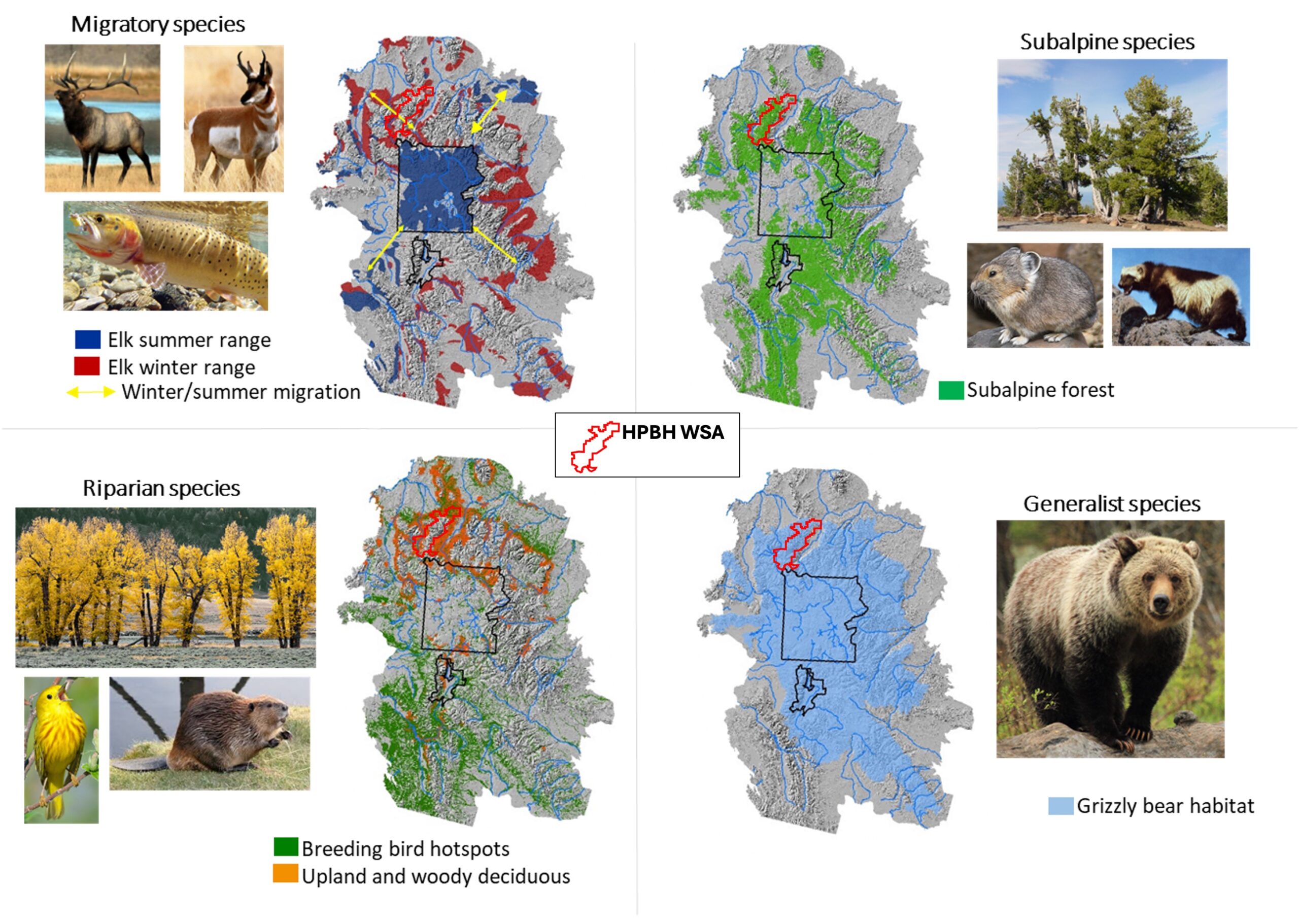

Climate and soils in the GYE cause wildlife species to specialize on high- or low-elevation habitats or to migrate seasonally among habitats. Consequently, the large area of diverse wildland habitats is needed to maintain Yellowstone wildlife.
Threats and Wildlife Values of the Gallatin Range
The WSA is surrounded by intense human pressure from Big Sky, Bozeman and the Paradise Valley.
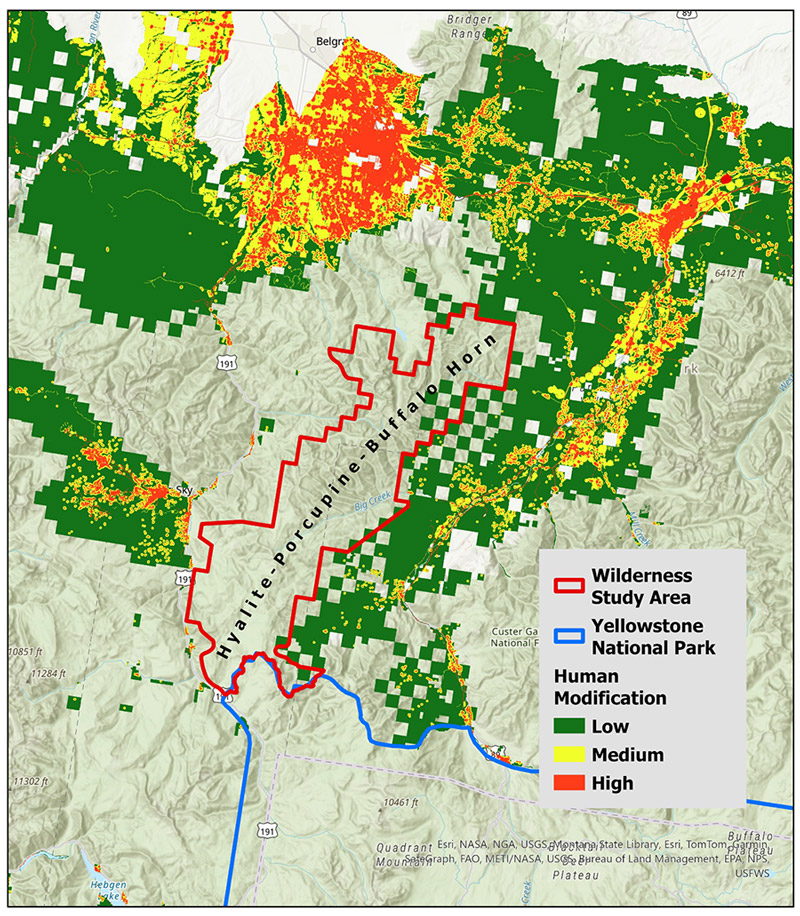
The GYCRA recreation areas would degrade vital grizzly bear connectivity habitat.
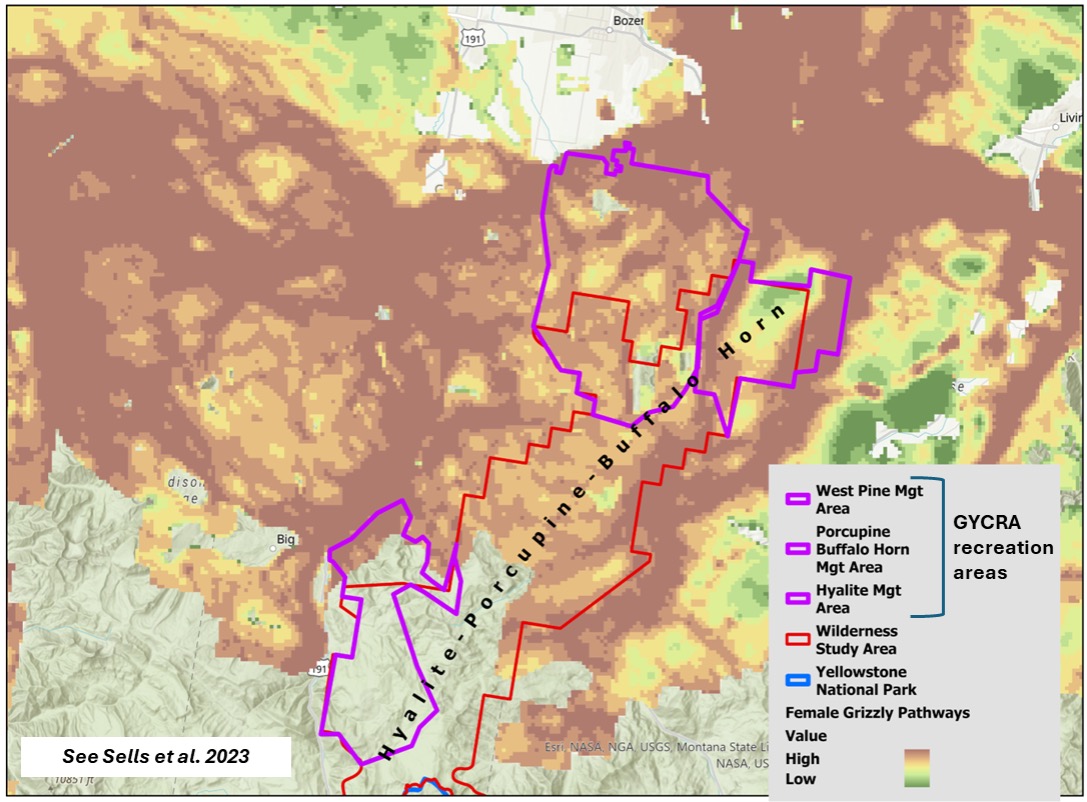
The WSA is surrounded by intense human pressure from Big Sky, Bozeman and the Paradise Valley.

The GYCRA recreation areas would degrade vital grizzly bear connectivity habitat.

About Us
Montanans For Wildlife & Wilderness
We are individual Montana citizens, conservationists, business owners, scientists, and journalists, who are intimately familiar with the Gallatin Range. We came together to address concerns regarding the potential loss of the intact Hyalite Porcupine Buffalo Horn Wilderness Study Area. Members recognize the value of the Greater Yellowstone Ecosystem and the need for permanent protection of surrounding WSAs and Inventoried Roadless Areas in the face of southwestern Montana's population explosion and the marketing of the area for industrial recreation regardless of the impact on wilderness and wildlife.
Learn More
Resources
Scientific Assessments
Scientific reference:
Commentary and Letters
